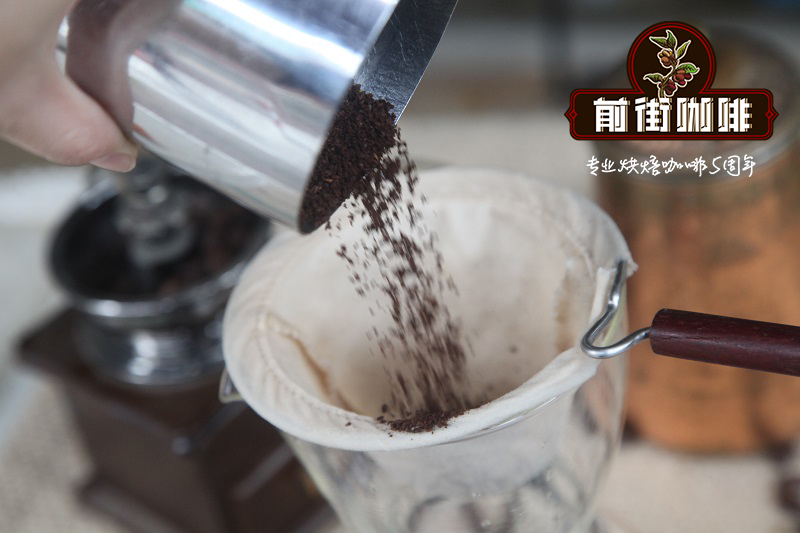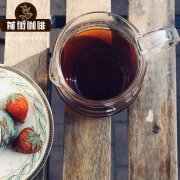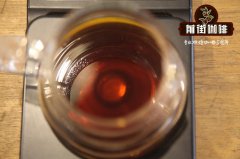What coffee beans are used for hand-brewing coffee at the Veolia processing farm in Kenya? coffee origin.

Professional coffee knowledge exchange more coffee bean information please follow the coffee workshop (Wechat official account cafe_style)
Qianjie Coffee is committed to promoting boutique coffee, providing more boutique coffee information for coffee lovers and practitioners.
Country: Kenya
Producing area: Embu County
Treatment yard: Veolia processing yard
Variety: SL34
Treatment: Kenyan washing method
Hand-made coffee flavor:
Lemon sour and honey sweet, greasy, vanilla plant, honey sweet, red berries, blackcurrant, dark chocolate, lingering finish
Veolia treatment Plant (Cooperative), which belongs to the Gandaly FCS Cooperative, is located in the coffee producing area of Embu County County, Kenya, about 1690-1750 meters above sea level. The cooperative has about 1080 members. Veolia's main coffee fruit comes from the four villages of Kirigi, Kiini, Mukangu and Kathangari. The processing farm stipulates that its members must grow coffee all the year round and cannot change other crops arbitrarily. Almost all members' policies towards the cooperative are acceptable and have a high degree of centripetal force (from the photos above, we can see the enthusiasm of coffee farmers to participate in the activities of the processing farm).
Each farmer grows about 350 coffee trees on average, covering an area of about 1 hectare. Farmers in the region also grow other cash crops, including passion fruit, bananas, cabbage, carrots and tea, and the treatment farm employs three managers and 30 temporary workers to cope with the busy harvest and treatment period during the peak season.
There are 9 waste water pits in Weiliya treatment plant, which are used to collect and treat the waste water produced in the process of washing and fermentation, far away from the river and prevent the waste water from causing pollution to the river. After the ripe fruit is picked, it is sent to the receiving area of the treatment plant, the ripe cherries are first soaked and separated from impurities, and then the peel and pulp are removed after processing. this is the famous Kenyan wet processing method in this area. the waste water produced in the whole process will first be placed in the soaking pit, and then recycled and reused.
The Veolia plant has several stages of monitoring and processing, such as separating the peel and initially removing the pectin layer, using a peeling machine with three sets of plates to remove the outer skin of the coffee fruit and the pulp outside the hard shell. After the pulp is removed, the coffee is fermented all night to decompose the sugar and pectin layer, and then, depending on whether the stripping is complete, the washing procedure is carried out, followed by soaking, and then the coffee is washed and evenly distributed on the high drying table for about 48-72 hours. The drying time on the drying table depends on the climate, ambient temperature and processing capacity, and it takes a total of about 15 days.
Important Notice :
前街咖啡 FrontStreet Coffee has moved to new addredd:
FrontStreet Coffee Address: 315,Donghua East Road,GuangZhou
Tel:020 38364473
- Prev

How do Rosa coffee beans, one of the most expensive coffee in the world, make a cup of Rosa coffee? how much is it?
Professional coffee knowledge exchange more coffee bean information please follow the coffee workshop (Wechat official account cafe_style) [rose summer coffee beans] one of the most expensive types of coffee in the world, when it comes to rose summer beans, we have to mention the emerald estate in Panama. In addition to the world-famous summer roses, Jade Manor has repeatedly created amazing transaction records. Daniel is the first to borrow a cup to measure hair.
- Next

What's so special about red standard Rosa coffee beans treated with yeast? How much is a cup of red label Rosa coffee?
Professional coffee knowledge exchange more coffee bean information Please pay attention to coffee workshop (Wechat official account cafe_style) fermentation this word in life is often reminiscent of noodle making cakes, Youtiao, steamed buns, steamed buns, or food spoilage items mildew. Fermentation has been used so much in our daily life that it is so common that we enjoy the variety.
Related
- Detailed explanation of Jadeite planting Land in Panamanian Jadeite Manor introduction to the grading system of Jadeite competitive bidding, Red bid, Green bid and Rose Summer
- Story of Coffee planting in Brenka region of Costa Rica Stonehenge Manor anaerobic heavy honey treatment of flavor mouth
- What's on the barrel of Blue Mountain Coffee beans?
- Can American coffee also pull flowers? How to use hot American style to pull out a good-looking pattern?
- Can you make a cold extract with coffee beans? What is the right proportion for cold-extracted coffee formula?
- Indonesian PWN Gold Mandrine Coffee Origin Features Flavor How to Chong? Mandolin coffee is American.
- A brief introduction to the flavor characteristics of Brazilian yellow bourbon coffee beans
- What is the effect of different water quality on the flavor of cold-extracted coffee? What kind of water is best for brewing coffee?
- Why do you think of Rose Summer whenever you mention Panamanian coffee?
- Introduction to the characteristics of authentic blue mountain coffee bean producing areas? What is the CIB Coffee Authority in Jamaica?

